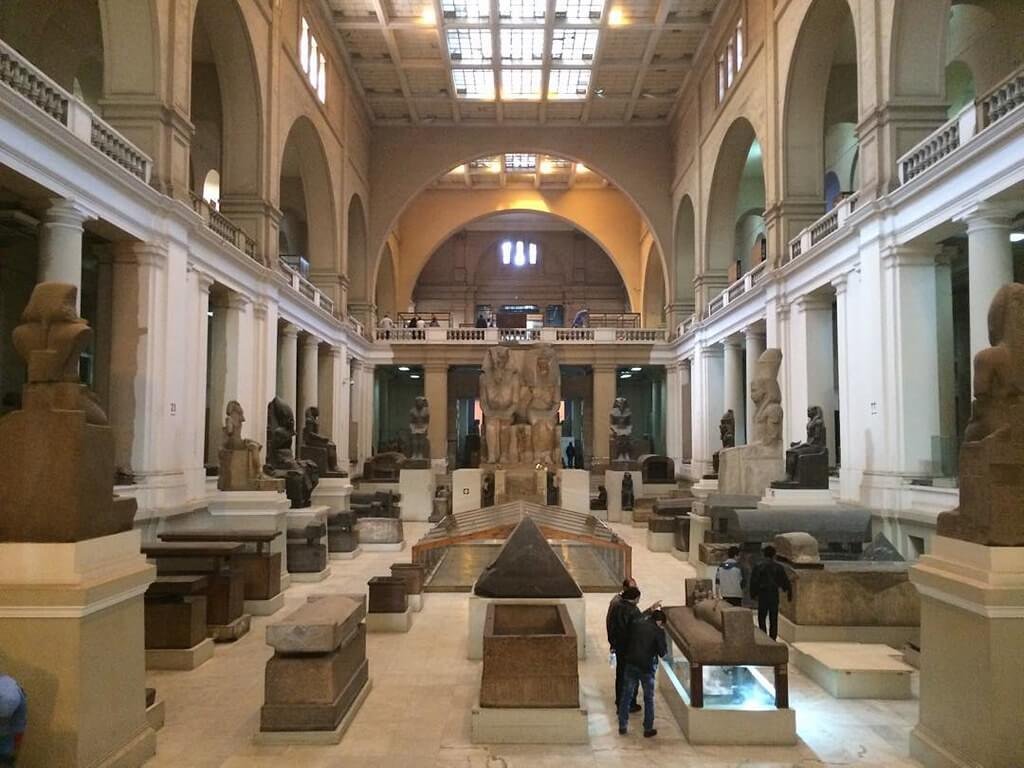By The Archaeologist Editor Group
The ancient Egyptians are renowned for their monumental architecture and exquisite craftsmanship, especially when working with hard stones like granite. A notable example that sheds light on their techniques is the unfinished sarcophagus housed in the Cairo Museum. This artifact offers vital clues to the methods used by these ancient artisans to cut and shape one of the hardest materials of their time.
Understanding Granite
Granite, an igneous rock, was highly favored by the Egyptians for its durability and aesthetic appeal. However, its hardness posed significant challenges in terms of quarrying, cutting, and shaping. This was especially remarkable given the relatively simple tools available to the ancient craftsmen.
Techniques in Quarrying and Cutting
1. Dolerite Pounders: The primary tools used in quarrying granite were dolerite pounders. These hard, ball-shaped stones were ideal for pounding the granite, creating a series of indentations. By repeatedly striking along these lines, the Egyptians were able to effectively fracture and extract large blocks of stone.
2. Copper Saws and Drills: Copper, though softer than granite, was used in saws and drills. The Egyptians likely employed a technique known as sand abrasion. By adding sand, which contains quartz, a harder material than copper, they could enhance the cutting capacity of their tools. The sawing action, combined with the abrasive sand, gradually wore through the stone.
3. Water and Wooden Wedges: Another ingenious method involved the use of water-soaked wooden wedges. These wedges, when driven into cracks or holes in the granite and soaked with water, would expand. This expansion exerted a significant force, helping to split the granite along predetermined lines.
Insights from the Unfinished Sarcophagus
The unfinished sarcophagus in the Cairo Museum is a compelling piece of evidence. Its incomplete state provides a snapshot of the ancient Egyptian stone-working process.
1. Tool Marks: The visible tool marks on the sarcophagus align with the known use of copper saws and drills. These marks indicate a gradual, methodical cutting process, supplemented by the use of abrasive sands.
2. Technique of Hollowing: The technique used to hollow out the sarcophagus involved drilling a series of closely spaced holes along the desired cut line. These holes would then be connected by sawing, eventually removing the interior block of stone.
3. Precision and Skill: Despite the rudimentary nature of their tools, the precision and skill evident in the sarcophagus are remarkable. The straight lines and smooth surfaces demonstrate a high level of craftsmanship and understanding of the material.
Conclusion
The unfinished sarcophagus in the Cairo Museum is more than just an artifact; it is a testament to the ingenuity and skill of ancient Egyptian artisans. Their ability to work with such a challenging material as granite using relatively simple tools is a testament to their engineering prowess. This piece not only provides insight into ancient stone-working techniques but also continues to inspire and intrigue historians, archaeologists, and enthusiasts of ancient Egyptian culture.










